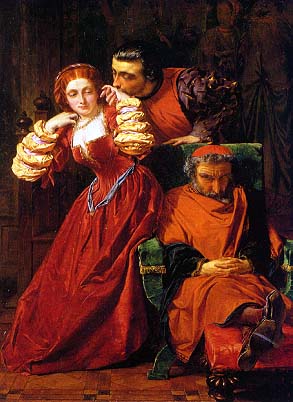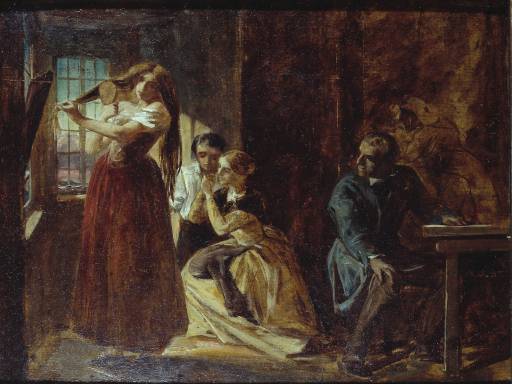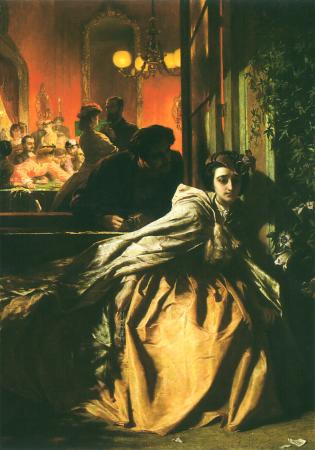Alfred Elmore (1815-1881)
Get a Elmore Certificate of Authenticity for your painting (COA) for your Elmore drawing.
For all your Elmore artworks you need a Certificate of Authenticity (COA) in order to sell, to insure or to donate for a tax deduction.
Getting a Elmore Certificate of Authenticity (COA) is easy. Just send us photos and dimensions and tell us what you know about the origin or history of your Elmore painting or drawing.
If you want to sell your Elmore painting or drawing use our selling services. We offer Elmore selling help, selling advice, private treaty sales and full brokerage.
We have been authenticating Elmore and issuing certificates of authenticity since 2002. We are recognized Elmore experts and Elmore certified appraisers. We issue COAs and appraisals for all Elmore artworks.
Our Elmore paintings and drawings authentications are accepted and respected worldwide.
Each COA is backed by in-depth research and analysis authentication reports.
The Elmore certificates of authenticity we issue are based on solid, reliable and fully referenced art investigations, authentication research, analytical work and forensic studies.
We are available to examine your Elmore painting or drawing anywhere in the world.
You will generally receive your certificates of authenticity and authentication report within two weeks. Some complicated cases with difficult to research Elmore paintings or drawings take longer.
Our clients include Elmore collectors, investors, tax authorities, insurance adjusters, appraisers, valuers, auctioneers, Federal agencies and many law firms.
We perform Alfred Elmore art authentication, appraisal, certificates of authenticity (COA), analysis, research, scientific tests, full art authentications. We will help you sell your Alfred Elmore or we will sell it for you.

Alfred Elmore was a Victorian history and genre painter. He was born in Cork, Ireland, the son of Dr. John Richard Elmore, a surgeon who retired from the British Army to Clonakilty.
His family moved to London, where Elmore studied at the Royal Academy of Arts. His early works were in the troubadour style of Richard Parkes Bonington, but he soon graduated to religious work, notably The Martyrdom of Thomas à Becket, commissioned by Daniel O’Connell for Westland Row Church in Dublin. Between 1840 and 1844 Elmore travelled across Europe, visiting Munich, Venice, Bologna, and Florence.
Elmore seems to have been associated with The Clique, a group of young artists who saw themselves as followers of Hogarth and David Wilkie. According to his friend William Powell Frith he was member of the group, but since it was most active while he was in continental Europe, his involvement was probably short-lived.

Most of Elmore’s later works were historical narrative paintings. Religious Controversy and The Novice were implicitly anti-Catholic in character. Other paintings set episodes from Shakespeare, or the history of the French Revolution. They often contained subtle explorations of the process of creation, most importantly his two paintings about technological innovation, The Invention of the Stocking Loom (1847, Nottingham Castle Museum) and The Invention of the Combing Machine (1862, Cartwright Hall, Bradford). Both portray the process of industrialisation by depicting picturesque pre-industrial handicrafts. The inventor is supposed to be pondering these manual skills while he forms in his mind a mechanism to replace them.
Elmore’s best-known work is On the Brink (1865; Fitzwilliam Museum, Cambridge), a moral genre painting depicting a young woman who has lost her money gambling, and is ‘on the brink’ of responding to the blandishments of a seducer, who is depicted as a satan-like figure, luridly bathed in red light, and whispering corrupting thoughts in her ear.
By the late 1860s Elmore was moving away from such Hogarthian subjects towards a more classical style influenced by Edward Poynter and Lawrence Alma-Tadema. He also painted Arabic figures, in line with the vogue for Orientalism in art.
Elmore suffered from neuralgia through much of his life, and in his late years he became lame following a fall from his horse. He died of cancer in January 1881 and was buried in Kensal Green cemetery in London.

Still wondering about a British painting in your family collection? Contact us…it could be by Alfred Elmore.
Reviews
1,217 global ratings
5 Star
4 Star
3 Star
2 Star
1 Star
Your evaluation is very important to us. Thank you.
